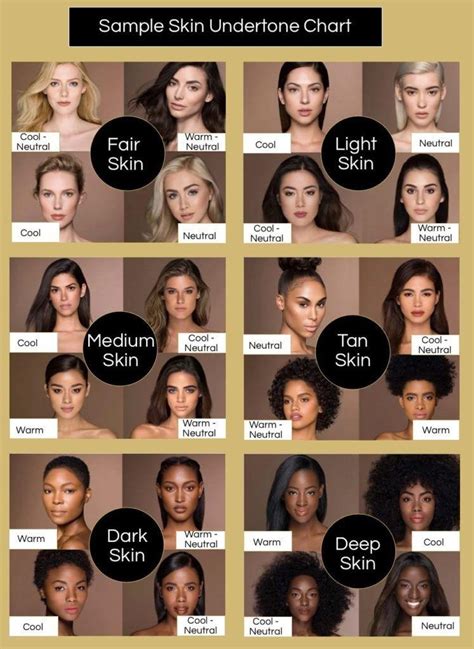Unlock the Perfect Hair Hue for Your Complexion

Choosing the best hair color for your skin tone can be a daunting task, but understanding the connections between your complexion and potential hair shades can make all the difference. With this comprehensive chart, you’ll discover the ideal hair colors to complement your unique skin tone, revealing your most radiant and flattering look.
Skin Tone Basics
When selecting a hair color, it’s crucial to consider your skin’s undertones. These subtle hues, which can be warm, cool, or neutral, play a significant role in determining which colors will harmonize with your complexion.
- Warm Undertones: Golden, peachy, or yellow undertones suggest warm skin.
- Cool Undertones: Pinkish, bluish, or rosy undertones indicate cool skin.
- Neutral Undertones: A blend of warm and cool undertones creates a balanced, neutral complexion.
Best Hair Color for Skin Tone Chart
Table 1: Warm Skin Tones
| Skin Tone | Best Hair Colors |
|---|---|
| Fair | Golden blonde, honey, copper, warm brown |
| Medium | Caramel, chestnut, auburn, chocolate |
| Olive | Amber, warm brown, golden blonde |
| Dark | Mahogany, deep brown, black with warm undertones |
Table 2: Cool Skin Tones
| Skin Tone | Best Hair Colors |
|---|---|
| Fair | Platinum blonde, beige blonde, ash brown, burgundy |
| Medium | Cool brown, espresso, blue-black, light ash blonde |
| Olive | Ashy blonde, cool brown, metallic silver |
| Dark | Jet black, raven, dark mahogany |
Table 3: Neutral Skin Tones
| Skin Tone | Best Hair Colors |
|---|---|
| Fair | Honey blonde, strawberry blonde, light brown |
| Medium | Caramel, chestnut, copper, chocolate |
| Olive | Golden brown, warm blonde, burgundy |
| Dark | Mahogany, black, dark brown |
How to Determine Your Skin’s Undertones
- Vein Test: Examine the veins on the inside of your wrist in natural light. Greenish veins indicate warm undertones, bluish veins suggest cool undertones, and a mix of both colors indicates neutral undertones.
- Jewelry Test: Silver jewelry tends to look better on cool skin tones, while gold jewelry complements warm skin tones. If both metals suit you, you likely have neutral undertones.
- Clothing Color Analysis: Bright, warm colors (e.g., orange, red) tend to flatter warm skin tones, while cool colors (e.g., blue, green) suit cool skin tones. Neutral skin tones can wear both warm and cool colors.
Common Mistakes to Avoid
- Choosing a color too far from your natural base: Dramatic color changes can be harsh and unflattering. Instead, opt for shades that are within two or three levels of your natural hair color.
- Neglecting your undertones: If you ignore your skin’s undertones, you risk choosing a color that clashes with your complexion and washes you out.
- Disregarding your personal style: While it’s important to consider your skin tone, don’t forget to choose a hair color that reflects your personality and style.
Why it Matters and Benefits of Choosing the Right Hair Color
- Enhances Your Complexion: The right hair color can brighten your skin, conceal imperfections, and bring out your natural glow.
- Complements Your Eye Color: Certain hair colors can intensify or complement the color of your eyes, creating a harmonious and eye-catching look.
- Boosts Confidence: When you feel good about your hair color, your confidence and self-esteem often radiate from within.
- Revitalizes Your Style: A fresh hair color can instantly update your entire look, giving you a boost of energy and style.
Conclusion
To achieve a truly dazzling hair transformation, it’s essential to select the best hair color for your skin tone. By understanding your skin’s undertones and referring to our comprehensive chart, you can confidently choose a shade that complements your complexion, enhances your features, and reflects your personal style. Embrace the power of the right hair color for a radiant and unforgettable new look.
